(+91) 9342924776
info@icfe.co.in
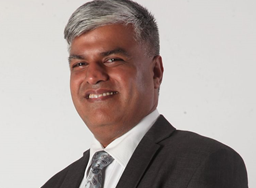
TEDx Speaker, Start-up Advisor,
MIMO POTENTIO,
Maharashtra
Biography:
Manish Advani is an 8 times TEDx Speaker, Award Winning Story teller and a Business Leader who has 20 years of Corporate Experience spread across Change Management, Marketing, Purpose based Branding, Public Relations, Internal Communications, Corporate Communications, Risk Management, Business Development, IT Project Management and Development. Manish has worked with some of the leading companies such as Microsoft Canada, Jaguar Land Rover, Mahindra SSG, Schindler, National Centre for Transportation, and Industrial Productivity - USA, on Managerial, Consulting or Leadership roles in different geographies such as India, Canada, Middle East and the United States of America. Manish is expert in integrating Leadership & Employee Development with Internal Communications and Personal / Employer Branding. Manish has featured in the Economic Times, The Hindu Business Line, Awesome TV's Show, NJIT's Highlander Show, Sustainability Next, Times of India, Bakstage's Podcast. Manish assists individuals and Organizations in addressing mental obstacles or roadblocks, unleashing their potential, improving performance and in exceeding expectations of the stakeholders.
Biography:
Dr. M.E. Fayad is a full professor of Computer Engineering at San Jose State University since 2002. Previously, he was J.D. Edwards's professor of Software Engineering in the Department of Computer Science & Engineering at the University of Nebraska, Lincoln, from 1999 to 2002. Between 1995 and 1999, he was an associate professor of Computer Science and a faculty of Computer Engineering at the University of Nevada. He has more than fifteen years of industrial experience in addition to ten years as a software architect in companies, such as McDonnell Douglas and Philips Research Laboratory. His reputation has grown by his achievements in the industry—he has been an IEEE distinguished speaker, an associate editor, editorial advisor, a columnist for The Communications of the ACM (his column is Thinking Objectively), a columnist for Al-Ahram Egyptians Newspaper (2 million subscribers), an editor-in-chief for IEEE Computer Society Press—Computer Science and Engineering Practice Press (1995–1997), a general chair of IEEE/Arab Computer Society International Conference on Computer Systems and Applications (AICCSA 2001), Beirut, Lebanon, June 26–29, 2001, and the founder and president of Arab Computer Society (ACS) from April 2004 to April 2007.

San Francisco Bay Area.
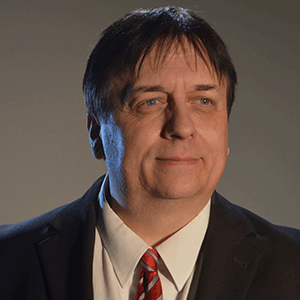
Visiting Professor of Management and Education for the Future, Lincoln International Business School LIBS, University of Lincoln, UK.
Visiting Professor of Quality Management, Warnborough College, IE/UK.
Professor Honoris Causa for Internationalisation, University Agora Oradea, RO.
President, Distinguished Visiting Professor, Senior Researcher, Honorary Fellow, SDG Ambassador, Futurist.
United Kingdom.
Biography:
Dr Urs HAUENSTEIN is the Volunteer President of the International Council of Education and Management (ICEM), the Association of Swiss Quality Competencies and Qualifications (SQCQ), the Institute of Competencies and Qualifications (I-C-Q) and the International Network for Accreditation, Recognition and Dissemination (INARD). He serves as Visiting Professor of Management and Education for the Future of the Lincoln International Business School, University of Lincoln and as Distinguished Visiting Professor in different Colleges / Universities in (Eastern) Europe and UK. The University Agora Oradea Romania honoured him as Prof. h.c. for Internationalisation. Urs is the Founder of the Chair network and Institute group: world21future, e21future & m21future (World, Education and Management for the 21st Century, for the Future). He initiated the research projects Management21, Priorities, Incubator21, Accelerator21, Transformator21, Priorities and is supporting as a keynote and master-class speaker at various international summits and high-level conferences.
Biography:
QUALIFICATIONS:
Ph.D. (Services Marketing), MBA,(Marketing), M.A.(Economics), M.A.(English Literature), A.T.M. (Advanced Tourism Management-(IITTM-WTO Spain)
INTERNATIONAL TEACHING EDHEC, Lille, France, Assumption International University, Thailand University of Mauritius, Mauritius GBS Royal University of Bhutan
RESEARCH CONDUCTED:
INDUSTRY EXPERIENCE:
POSITIONS HELD DEAN:
MANAGEMENT & TOURISM INTERNATIONAL INSTITUTE OF PROFESSIONAL STUDIES
DEVI AHILYA UNIVERSITY INDORE INDIA.
PRESENT POSITION:
UGC (GOVERNMENT OF INDIA) Subject Expert for Management and Tourism.
Professor Emeritus, Oriental University, India

Professor emeritus.
Dean of Management and Tourism.
Devi Ahilya University.
Indore
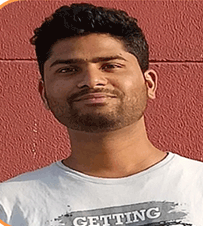
Article Name:
Review of Advanced Battery Management System (BMS) Algorithm for Li-ion batteries’ module in Electric Vehicles (EVs)
Designation: PhD Scholar
University: G.B. Pant University of Agriculture and Technology
Country: india
Batteries are crucial in switching towards renewables, especially solar and wind. Efficient and reliable energy storage technologies motivate people to relinquish traditional generators that use fossil fuels, coal etc. which are non-eco-friendly and cause so many greenhouse gas emissions. Efficient batteries like Li-ion batteries (LIBs) also suffer from memory effects, thermal instability at a higher temperature, and ageing due to over-charging and undercharging conditions. It is also impossible to operate all cells in the same module with the same charging and discharging rate. Also, monitoring the temperature of all the cells is crucial to work within the rated range to avoid the possibility of thermal runaway. Battery Management System (BMS) technology, along with the data acquisition system, is like a doctor that continuously monitors the state of charge (SoC), state of health (SOH), state of function (SOF), etc. of every cell by measuring quantities like current, voltage, temperature, impedance, etc. of the cells in real-time for performing charge balancing, thermal management, and protection against over-charging and under-charging by implementing efficient algorithms to perform state estimation with the highest accuracy which contains very minimum noise or errors. Conventional passive charge balancing is easy and inexpensive but inefficient. This paper discusses some advanced SOC estimation algorithms for BMS like Data-driven (Support Vector Machine) SVM Kernel, (Radial Basis Function) RBF Neural Network, Backpropagation Neural Network (BPNN), Deep Neural Network (DNN), modal-based (recursive Bayesian estimation) filtering algorithms like Kalman filter (KF), Unscented Kalman filter (UKF), Extended Kalman filter (EKF), Particle filter (PF), etc., Sliding Mode Observer (SMO), Fuzzy logic, and Electrochemical impedance spectroscopy (EIS) to monitor performance and implement the control strategy to obtain efficient and reliable battery performance with enhanced cycle life.
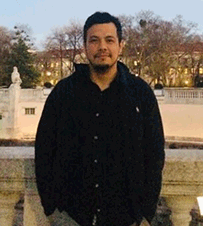
Article Name:
Impact of the electric boats on the distribution network and load modeling
Designation: Doctor
University: Universidad simón Bolívar
Country: Venezuela
In the following years, the most considerable energy consumption around the coastal cities will be focused on Maritime vessels, including small and medium boats. Hence, the interest in developing mathematical models will increase to analyze the load behavior, simulate models, and observe the interaction with microgrids. This paper presents a mathematical model of an electric boat and the analysis of interactions with other electric loads within a microgrid. The proposed model helps study the different behaviors of the system and can be considered in electrical system planning and operation. The results show that the boat can interact with the different loads and acts like an electric load during a time period. The interaction with other residential loads in the microgrid shows similar behavior to the different consumptions in the network, and the system must be optimally designed to respond to the simulated variations.
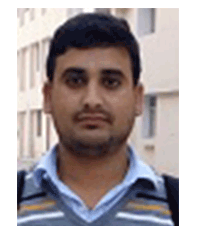
Article Name:
Effect of the Inlet-Outlet Key Slope of PKW and Channel Bed Slope on Its Discharge Capacity
Designation: Research Scholar
Department : Civil Engineering
University: Delhi Technological University
Country: india
A Piano Key Weir (PKW) is a type of nonlinear (labyrinth-type) ungated spillway with a relatively small spillway footprint. PKWs have a large number of geometric parameters that affect the head-discharge performance of the weir. Several previous studies associated with the hydraulic design of PKWs based on geometrical parameters have significantly discussed the parameter’s importance. However, it still requires more in-depth research to refine further these findings and their role in the efficient design of PKW. In this study, an experimental investigation has been carried out to determine the optimal slope of the inlet-outlet key floors of PKW and also see the effects of channel bed slope on the discharge efficiency of the PKW. To this end, twelve different inlet-outlet key slope’s laboratory-scale type-A PKW models were tested, while all other geometrical parameters were kept constant. The results showed that, as the slope of inlet-outlet key bottoms of PKW increases, the hydraulic performance of the weir enhances up to certain key slopes, then it declines, which is consistent with past literature. According to the present study results, the optimal key bottom slopes of PKW range between 1 and 1.1, which is more specific to previous studies. Moreover, the slopes of the channel bed significantly affect the PKW’s discharge efficiency and found that, as the slope of the channel bed increases, the discharge efficiency of PKW enhances with a low Ht/P ratio of around 50-60%, while it increases by 18-20% for higher values. In addition, the experimental data of the present study were used to validate the analytical approach, and it appears that the experimental and analytical techniques are in good agreement.
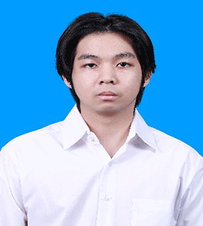
Article Name:
Video Game RPG-Idle Base “Tapel Saga”
Department : School Of Computer Science
University: Bina Nusantara University
Country: Indonesia
|Tapel Saga is a mobile game that mixing RPG (A role-playing game (RPG) is a genre of video game where the gamer controls a fictional character (or characters) that undertakes a quest in an imaginary world). Idle game(An idle game is a game that progresses with no interaction from the player.) and Visual novel (Visual novel (VNs) video games are text-based adventure games that combine interactive fiction and traditional anime or manga art styles to give the gamer the experience of reading a novel in a visual format). To create engaging experiences though the unique gameplay. With The Fundamental Game Design to forged Tapel Saga, that concept was implemented on some variant mode: main story, endless run and boss rush.
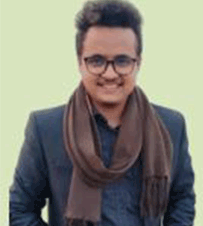
Article Name:
A Deep Transfer Learning-Based Approach to Detect Skin Diseases
Designation: Student
Department : Computer Science and Engineering
University: Daffodil International University
Country: Bangladesh
Human body can have many types of disease. Some of those is internal & some of those is external. Here, we talk about external disease. Which is generally attacks the skin. Then it is called skin disease. According to who the skin disease rate in Bangladesh reached 1131 or 16% [1]. It is usually caused by seasonal changes, pollution, dirty environment, allergy and lack of skin care. Other diseases can also be caused for this disease. Our research is about all kinds of skin diseases. First, we have collected images of various skin diseases. Then we classified it using transfer learning-based algorithm. Transfer learning is currently a very popular system that is now used in almost every automation technology in the world. Our main objective is to make people aware of their skin diseases very easily. We have used some transfer learning-based algorithm to classify the skin disease. Some algorithm showed us a very good performance. But among all we have adopt MobileNetV2 and its performance. Which is 99%. We have planned to make an android app by using our adopt model where anyone can check their skin disease & confirm about their disease classification.

Article Name:
QR Code Detector and Follower with Kalman Filter
Department : School Of Computer Science
University: Bina Nusantara University
Country: Indonesia
For any robot, animal, or social animal to learn, understand, and respond appropriately, visual perception is the most critical capacity. This paper presents an example of computer vision-based research written in the Python programming language which employs libraries like OpenCV and NumPy. To navigate a robot on its own USB 2.0 high-definition camera mounted on robot captures the video stream in the operating area. Identification and decoding of QR code from the visible environment of camera using the image processing and QR code detection algorithm. Tracking of QR code is done using the Kalman filter. The robot will function according to the decision taken by program logic developed in minicomputer depending on data input from the camera.
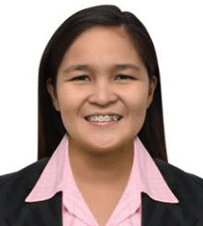
Article Name:
Spectrometry for Nitrogen and Phosphorous Macronutrients Detection in a Soil
Department : College of Engineering and Architecture
University: University of Nueva Caceres
Country: Philippines
Soil testing is a tool to diagnose the fertility status of the soil by determining the number of essential nutrients such as NPK macronutrients. To warrant a high yield of produce during harvest, plants should receive a balance of the proper nutrients it needs. The study developed a Soil Nutrient Tester (SNT) that uses the visible light spectrum and absorption principle to measure Nitrogen (N) and Phosphorous (P) in soil. This study aims to develop an inexpensive soil N-P nutrient tester and have an accuracy comparable to the spectrophotometer used in the laboratory. The SNT utilizes an RGB color sensor to detect the transmitted light passing through the sample solution. It used Arduino Uno Microcontroller as the brain of the device and an RGB LED as a light source that emits 450 nm and 700 nm wavelengths for Nitrogen and Phosphorus, respectively. The SNT identified the Nitrogen and Phosphorous level based on the soil test interpretation standard utilized by the Regional Soils Laboratory. The device results were compared and calibrated with the measurements of the Hitachi U-1800 Spectrophotometer to improve its accuracy and precision. A t-test revealed that the device's measurements have no significant difference from the concentration measurements of the reference device for a confidence level of 95%, proving that the device is competent in measuring N-P macronutrients accurately. The device was also able to reduce the time spent evaluating N-P nutrient content and the cost of the spectrophotometer. This device will allow farmers and home gardeners to regularly check their soil's N-P nutrient status to decide the proper amount of fertilizer to apply.
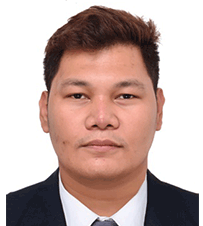
Article Name:
BIM Gauge: Design and Development of a Web-Based Building Information Modeling Implementation Maturity Assessment Tool for Construction Projects in The Philippines
Department : Graduate Programs
University: Technological Institute of the Philippines
Country: Philippines
The purpose of this research was to apply the established BIM Gauge Framework to the creation of a web-based BIM Maturity Assessment Tool for use in the Philippines' BIM sector. This instrument will assess the present state of BIM implementation inside a business and help determine the best way to enhance it to fit its needs. This study analyzed and compared the characteristics, benefits, frameworks, and methods of various existing BIM evaluation systems, as well as surveyed the relevant literature. The study concluded that the AEC sector has acknowledged a variety of BIM evaluation models which are crucial in implementing diverse BIM-based projects based on their features and purposes. These models were used to generate the BIM Gauge framework which consists of six main components that will measure the maturity of an organization in different areas. The study identified that the various parts of the BIM Gauge Framework are useful for assessing how BIM-based projects must and should be executed. As a result, respondents seemed to be satisfied with the use and result of BIM gauge as a tool for assessing the maturity of their BIM implementation.
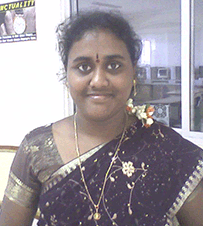
Article Name:
An Optimized Approach for Privacy Preserving of Big Data using GDTM and Random Number Generators with GNN
Department : CSIT
University: Institute of Aeronautical Engineering (IARE)
Country: india
In this paper we propose a Privacy preserving mechanism of big data using GDTM along with Random Number generators. Given the rapid explosion of data being used across Enterprises, Individuals and Sensors, billions of data is being streamed and exchanged across the network. There is a high possibility of sensitive data being exchanged and stored, its important to preserve sensitive data of Individuals and Enterprise data.
Most of the current techniques of privacy preserving in particular in the areas of data perturbation has been done on Static data. Given the dynamic nature of the applications and the huge data that is being generated its important to evaluate the privacy preserving on big data without losing the accuracy.
Our research contribution is on Privacy preserving of big data using Geometric data transformation, random number generator and GNN techniques [5]. We would like to extend our research further on improving the accuracy of big data.
Copyright @ 2022. All Rights Reserved.
Terms and condition | Privacy Policy